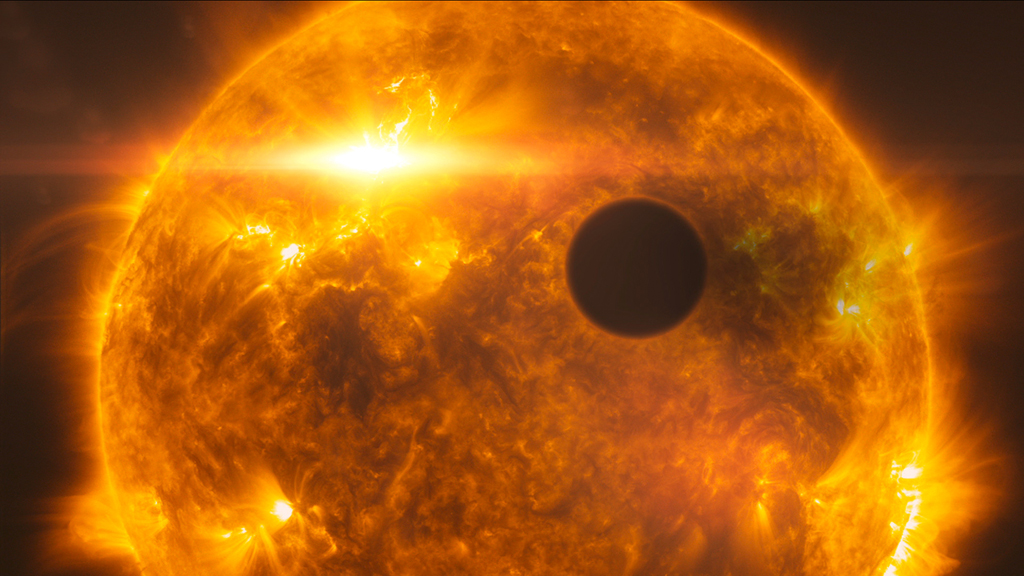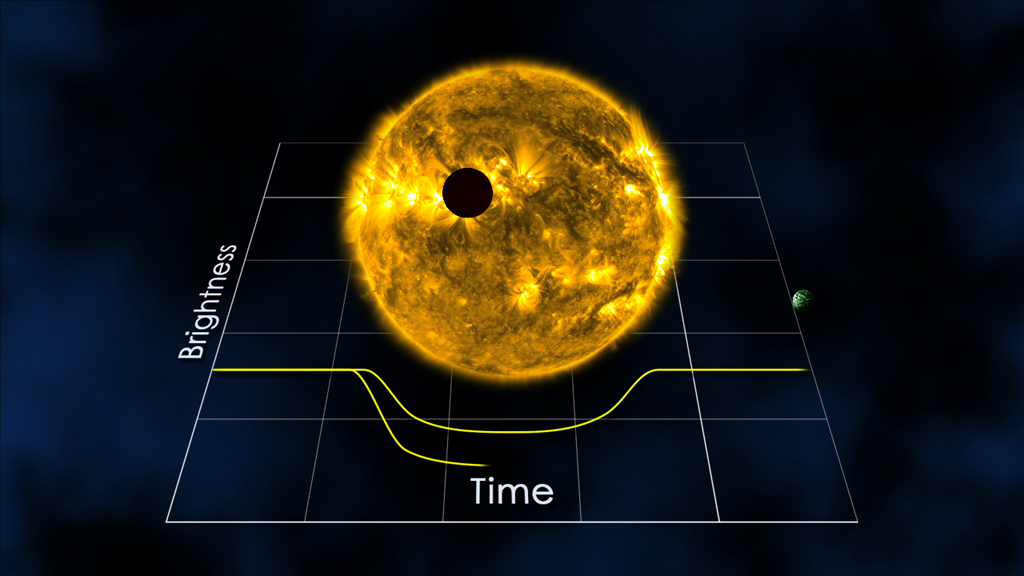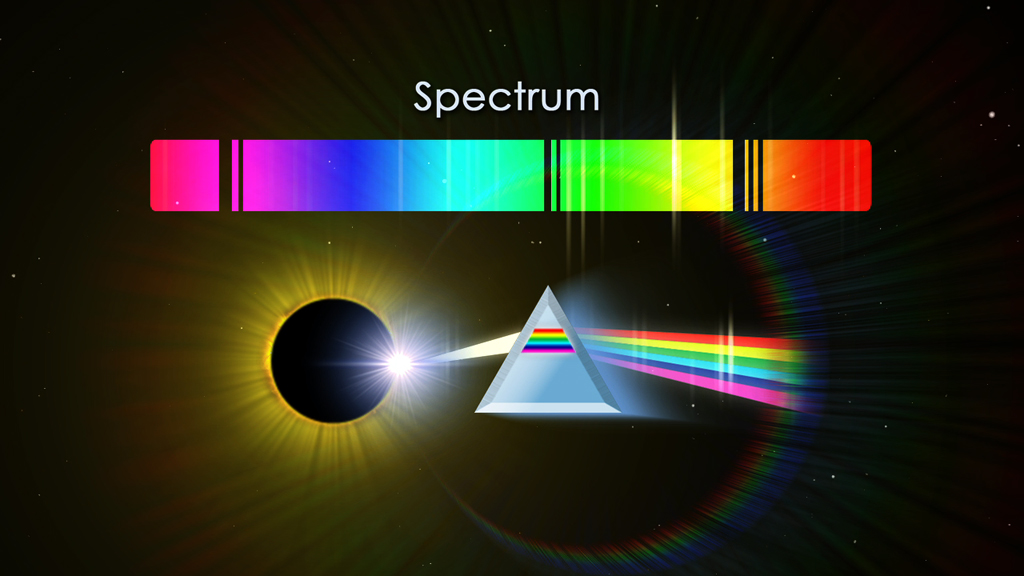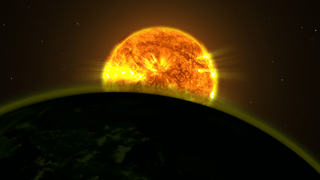Planets and Moons
ID: 11413

Since the early 1990s, astronomers have known that distant planets orbit stars light-years from Earth. Although most of these alien worlds, called exoplanets, are too far away to be imaged directly, scientists have made detailed observations of their size and composition. One method of study involves watching a planet as it transits its host star. By measuring how the brightness and color of a star changes when a planet crosses in front of its disk, astronomers can indirectly determine the mass of the planet and the proximity of its orbit. Similar measurements can provide other key information, like the chemical makeup of a planet's atmosphere. Watch the video to learn more.



Exploring Outer Worlds




Related Story
Story Credits
Visualizers/Animators:
Dan Gallagher (USRA)
Michael Lentz (USRA)
Chris Smith (HTSI)
Scott Wiessinger (USRA)
Video Editor:
Dan Gallagher (USRA)
Narration:
Dan Gallagher (USRA)
Avi Mandell (NASA/GSFC)
Narrator:
Dan Gallagher (USRA)
Producer:
Dan Gallagher (USRA)
Lead Scientist:
Avi Mandell (NASA/GSFC)
Lead Writer:
Dan Gallagher (USRA)
Dan Gallagher (USRA)
Michael Lentz (USRA)
Chris Smith (HTSI)
Scott Wiessinger (USRA)
Video Editor:
Dan Gallagher (USRA)
Narration:
Dan Gallagher (USRA)
Avi Mandell (NASA/GSFC)
Narrator:
Dan Gallagher (USRA)
Producer:
Dan Gallagher (USRA)
Lead Scientist:
Avi Mandell (NASA/GSFC)
Lead Writer:
Dan Gallagher (USRA)
Please give credit for this item to:
NASA's Goddard Space Flight Center
Cover image courtesy of ESA/Hubble
NASA's Goddard Space Flight Center
Cover image courtesy of ESA/Hubble
Short URL to share this page:
https://svs.gsfc.nasa.gov/11413
Keywords:
DLESE >> Narrated
SVS >> App
NASA Science >> Planets and Moons
https://svs.gsfc.nasa.gov/11413
Keywords:
DLESE >> Narrated
SVS >> App
NASA Science >> Planets and Moons








